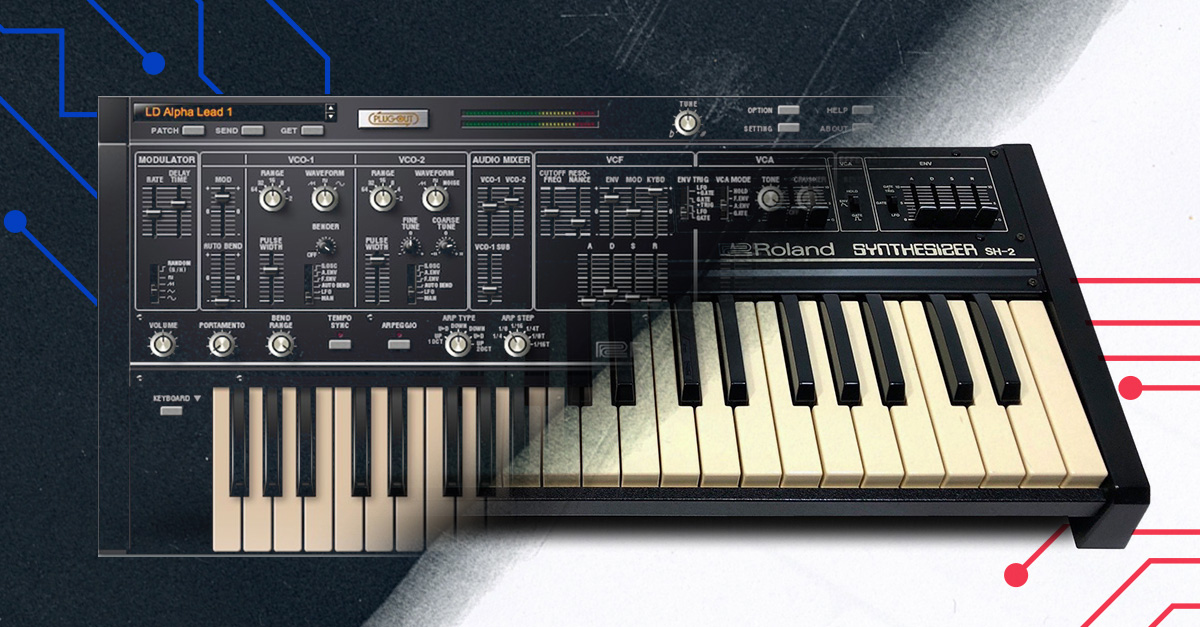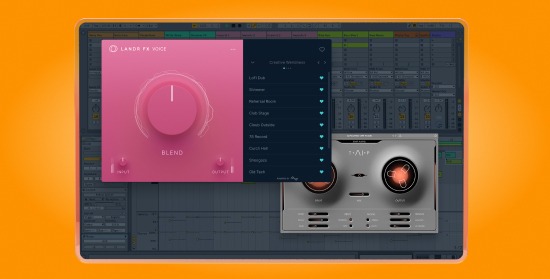Skeuomorphism: How Plugin Design Affects What You Hear

How much does the graphic design of a plugin influence your opinion of how it sounds?
You might think your ears are totally objective—but the visual feedback you get from your tools has a massive impact.
We’re all guilty of it. Have you ever tweaked an EQ plugin for minutes on end before realizing that it’s actually bypassed, or inserted on the wrong channel? I certainly have.
Attuning your brain to subtle changes in sound can make you highly susceptible to all kinds of influences.
Attuning your brain to subtle changes in sound can make you highly susceptible to all kinds of influences.
Plugin design is no exception. Are you getting tricked?
Here’s how skeuomorphic design may—or may not be affecting your mixes.
What is skeuomorphism?
Skeuomorphism is a design principle in which elements of a user interface in the digital domain mimic the appearance of their equivalent in the physical world.
Skeuomorphic design comes from the early PC era when the desktop paradigm of computing was first taking over.
Designers had to match basic computer functions like folders or the trash bin with real-world concepts in order for users to grasp the metaphor.

There’s no real reason for the location of deleted files to be called the trash bin. But doing so certainly helps the user understand its purpose intuitively through the design cues themselves.
Making something easier to use is never a bad thing. But skeuomorphic design has some problematic implications for plugins and the way you mix.
Skeuomorphic design comes from the early PC era when the desktop paradigm of computing was first taking over.
Skeuomorphic plugins
Skeuomorphism is rampant in audio plugin design.
Plugin controls have evolved from minimalistic sliders pulled straight from the Windows 95 style guide to lush UIs that make you feel like you’re working with real vintage hardware.

It’s hard to pinpoint exactly when it started, but somewhere some clever UI designer realized that they could sell a lot more plugins if they looked like classic analog equipment.
Analog gear can be incredible, but a lot of the hype is based on supply and demand.
Hardware is expensive, classic pieces are extremely rare and there’s always a talking head somewhere ready to claim that the “secret sauce” of your favourite records was actually a certain analog signal chain.

It’s hard to pinpoint exactly when it started, but somewhere some clever UI designer realized that they could sell a lot more plugins if they looked like classic analog equipment.
Over time, online recording lore elevated certain pieces of analog gear to mythical heights.
The idea of getting some of that magic for your own mix is what makes skeuomorphic plugins so effective.
The imitation game
Legendary hardware units that have been studio staples for decades are at the centre of the analog obsession. But strip away the mystique and any analog processor is simply an electronic circuit.
Each component in a circuit has physical properties and behaviours that plugin designers can measure.
In theory, measuring and replicating the response of every component in a signal path should result in a perfect emulation of the hardware.
In theory, measuring and replicating the response of every component in a signal path should result in a perfect emulation of the hardware.
Sensitive measurement and modelling techniques can even account for so-called “nonlinearities” like distortion and saturation.
Of course, in practice, the debate over plugins vs. hardware rages on—with much of the conversation focused on whether some new emulation “sounds as good as the real thing.”
I’m not looking to take a side on that here, but it’s clear that a plugin’s authenticity is more convincing if it looks like the real thing too.
That’s where skeuomorphism comes in.

There’s a reason that Universal Audio vigorously defends its claim as the only officially licensed software emulation of the most sought-after studio processors. A plugin UI that mirrors the hardware front panel perfectly is extra convincing for the user.
It’s worth asking yourself some hard questions about out how much that aspect of design is affecting your choices.
How close exactly does that 1176 plugin sound to the original? Have you ever even heard a real one? Does the plugin’s “analog” character come through? Would you feel the same about how “warm” it sounds if it looked like this?
Clearly the answers to questions like these are highly subjective. But skeuomorphic design can subconsciously push you in a particular direction.
Solitary Skeuomorphs
Skeuomorphism isn’t necessarily bad.
In cases where a plugin designer takes enormous pains to perfectly model a particular vintage unit with a well-known workflow, skeuomorphic design choices are practical.
Users that are familiar with the hardware will immediately be able to use the plugin.
But when the plugin is an original design that doesn’t emulate a specific piece of analog gear, skeuomorphism can seem more problematic.
Since I’ve already brought UAD into it, let’s take a look at one of their recent releases: the Century Tube Channel Strip.
UAD says the Century Tube is brimming with analog character. But as far as I can tell it, it’s not a one-to-one model of any existing hardware—despite the suggestion from its skeuomorphic design!
Could it be based on a renowned high-end manufacturer’s channel strip? Possibly, although that company doesn’t make an optical compressor.
It’s more likely that the designers simply mocked up a hardware front panel to signal vacuum tube technology to users.
The plugin itself could based on existing emulated circuits and gain stages leftover from other UAD products.
This kind of imaginary tube processor probably sounds just as good as the rest of their tube emulations, but it muddies the waters about what analog actually is.
Maybe the “analog” that the new generation of mix engineers is chasing exists more in the collective imagination than the hardware itself…
Maybe the “analog” that the new generation of mix engineers is chasing exists more in the collective imagination than the hardware itself…
Meta-Skeuomorph-osis
Skeuomorphic plugins make you stop and think about the external factors that contribute to your perception of sound.
Humans are visual creatures, and are our cognitive biases can be hard to overcome.
So be aware of skeuomorphic design the next time you reach for a plugin to get some “vintage analog warmth” into your tracks.
And let your ears be the judge!
Gear guides, tips, tutorials, inspiration and more—delivered weekly.
Keep up with the LANDR Blog.
Latest posts
